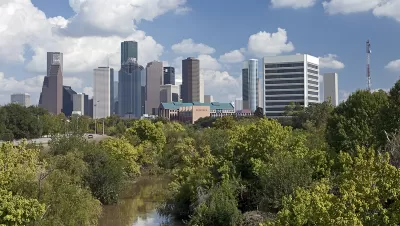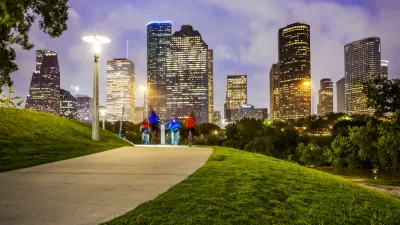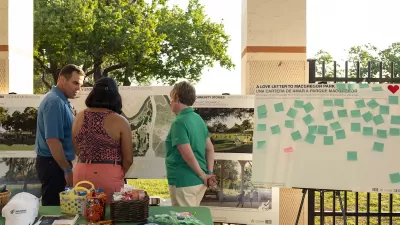With more than 50,000 acres of parkland, Houston is one of many cities to notice an increase in use of natural areas. Natural Resources Manager Kelly Ondracek is drafting a plan to protect the natural lands from development.

The "Impacts of COVID-19 on American's Natural Areas," report, recently published by the Natural Areas Conservancy, shows "an observed increase, relative to previous years, in public use of urban natural areas since March 2020."
The report calls for a future in which access to natural areas in cities are supported and prioritized. Cinnamon Janzer reports that Houston, one of the cities surveyed, is taking the initiative to protect natural areas in the city's parkland from development. Officials have done so by "putting in sports fields or playgrounds or amphitheaters. Over the last year, Natural Resources Manager Kelly Ondracek and her team have been working to identify 7,000 acres of natural parkland across 25 parks that she hopes to protect through an upcoming city ordinance," says Janzer.
Ondracek noted increased support for the efforts thanks to increased natural area use since the onset of COVID-19.
"The ordinance would hopefully mark thousands acres of city parkland as nature preserves. This would mean that amenities like parking lots and buildings would be concentrated in certain areas of a park while a good portion of the rest is left undeveloped, creating natural habitat for wildlife and allowing for nature-friendly developments like bird-friendly lighting and trail signage," writes Janzer.
Ondracek is in the process of planning a green stormwater system for and is hopeful that the ordinance will be passed by the end of the year.
FULL STORY: How COVID-19 Is Inspiring Houston Officials to Preserve Natural Areas

Study: Maui’s Plan to Convert Vacation Rentals to Long-Term Housing Could Cause Nearly $1 Billion Economic Loss
The plan would reduce visitor accommodation by 25,% resulting in 1,900 jobs lost.

Alabama: Trump Terminates Settlements for Black Communities Harmed By Raw Sewage
Trump deemed the landmark civil rights agreement “illegal DEI and environmental justice policy.”

Why Should We Subsidize Public Transportation?
Many public transit agencies face financial stress due to rising costs, declining fare revenue, and declining subsidies. Transit advocates must provide a strong business case for increasing public transit funding.

Paris Bike Boom Leads to Steep Drop in Air Pollution
The French city’s air quality has improved dramatically in the past 20 years, coinciding with a growth in cycling.

Why Housing Costs More to Build in California Than in Texas
Hard costs like labor and materials combined with ‘soft’ costs such as permitting make building in the San Francisco Bay Area almost three times as costly as in Texas cities.

San Diego County Sees a Rise in Urban Coyotes
San Diego County experiences a rise in urban coyotes, as sightings become prevalent throughout its urban neighbourhoods and surrounding areas.
Urban Design for Planners 1: Software Tools
This six-course series explores essential urban design concepts using open source software and equips planners with the tools they need to participate fully in the urban design process.
Planning for Universal Design
Learn the tools for implementing Universal Design in planning regulations.
Smith Gee Studio
Alamo Area Metropolitan Planning Organization
City of Santa Clarita
Institute for Housing and Urban Development Studies (IHS)
City of Grandview
Harvard GSD Executive Education
Toledo-Lucas County Plan Commissions
Salt Lake City
NYU Wagner Graduate School of Public Service





























